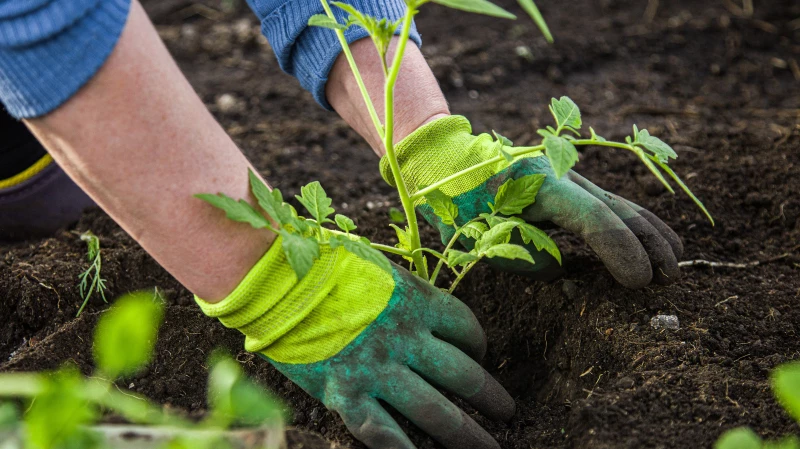For those of us who struggle to keep plants alive, gardens can be quite intimidating. The fear of overwatering or underwatering, combined with the constant worry of pests destroying your hard work, can make gardening a daunting task. Transitioning from ornamental flowers to growing your own food adds another layer of complexity. But what if there was a secret trick to help anyone create a successful food garden?
One key tip is to plant lemon balm or other citrus plants near your food crops. Not only will this deter pests like spiders, but it will also fill your garden with a delightful fragrance. Additionally, a TikTok user named @perkyplantparent has shared three plant varieties that are easy to grow for beginners: potatoes, tomatoes, and lettuce seedlings.
For those with limited time, potatoes are a great option as they have a natural drive to grow, requiring minimal human interaction. Tomatoes thrive with just a bit of water and fertilizer. Lettuce, perfect for shady areas, is low-maintenance and can grow in as little as 30 days.
Proper Techniques for Growing These Plants
To grow potatoes, dig a 6 to 8-inch hole in your garden, indoors or outdoors. Place a piece of seed potato cut-side down in the trench, spacing them 12 to 15 inches apart. If space is limited, closer planting is acceptable. Ensure they receive at least six hours of direct sunlight daily for healthy growth, even though they grow underground.
Lettuce is a forgiving plant for those who may not have the greenest of thumbs. It thrives in spring or fall weather conditions ranging from 45 to 80 degrees. The key to success lies in starting with well-drained, moist soil rich in organic matter. Maintaining a pH balance between 6.0 and 7.0 is crucial, as a higher pH can limit nutrient availability during growth. To enhance the soil, consider adding cottonseed or composted manure for optimal lettuce growth.
Tomatoes also love sunny conditions and desire about six to eight hours of direct sunlight. Water is also essential here. TikTok user @mindandsoil experienced a 100% germination rate by filling the small tomato pots with worm casting seed mix, then plenty of water. You'll want your soil to be extremely wet, so the seedling can be moistened immediately. After planting a few seeds into your small container, water it a bit more. Though the creator recommends using a grow light for definite growth, feel free to use direct sunlight, instead, if you have access.
Watering once or twice a day will be needed as temperatures increase. If you prefer to plant your tomatoes directly in the ground, they'll need a bit less water, but always around 1 to 2 inches a week.
When your garden bed is prepared, make sure to dampen the soil and scatter a handful of lettuce seeds. There's no need to be precise with the placement of the seeds, just go with your instincts. It typically takes between one to two weeks for the seeds to sprout, and for most of the year, they will adjust to their spacing requirements whether they receive full sun or thrive in the shade. However, during the summer months, it's advisable to plant them in an area that gets afternoon shade. As for watering, only water your lettuce plants when the top inch of soil feels dry to the touch. Since the roots are shallow, they require consistent moisture, but be mindful of adjusting the watering schedule as the seasons shift. In the summer, you may need to increase the frequency of watering due to the longer exposure to sunlight.







